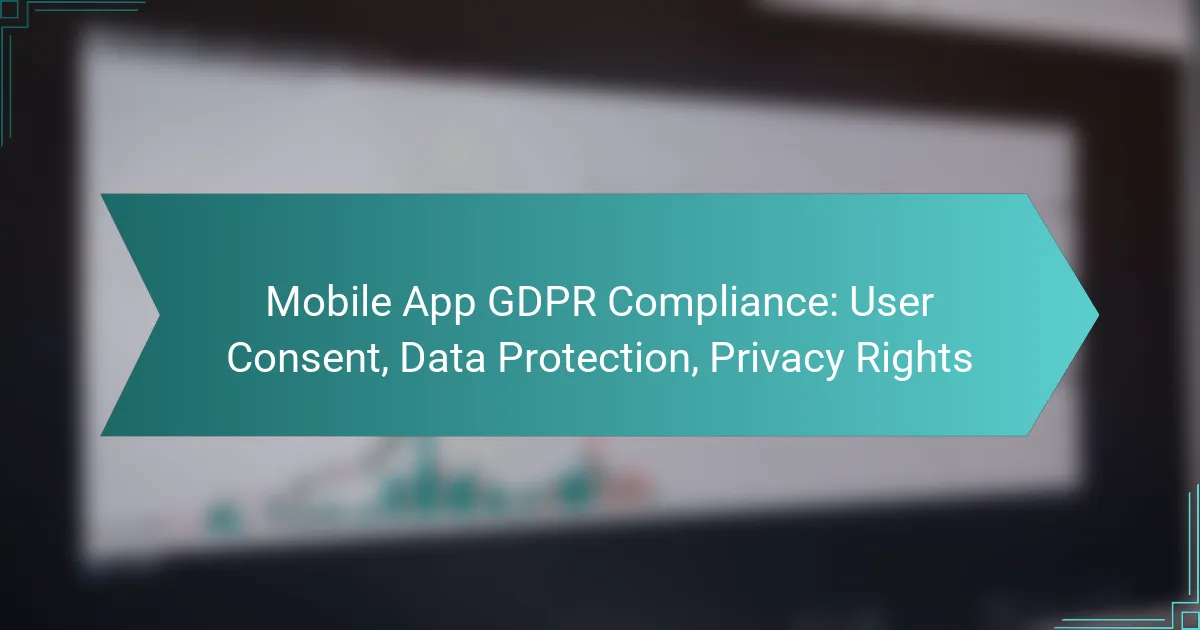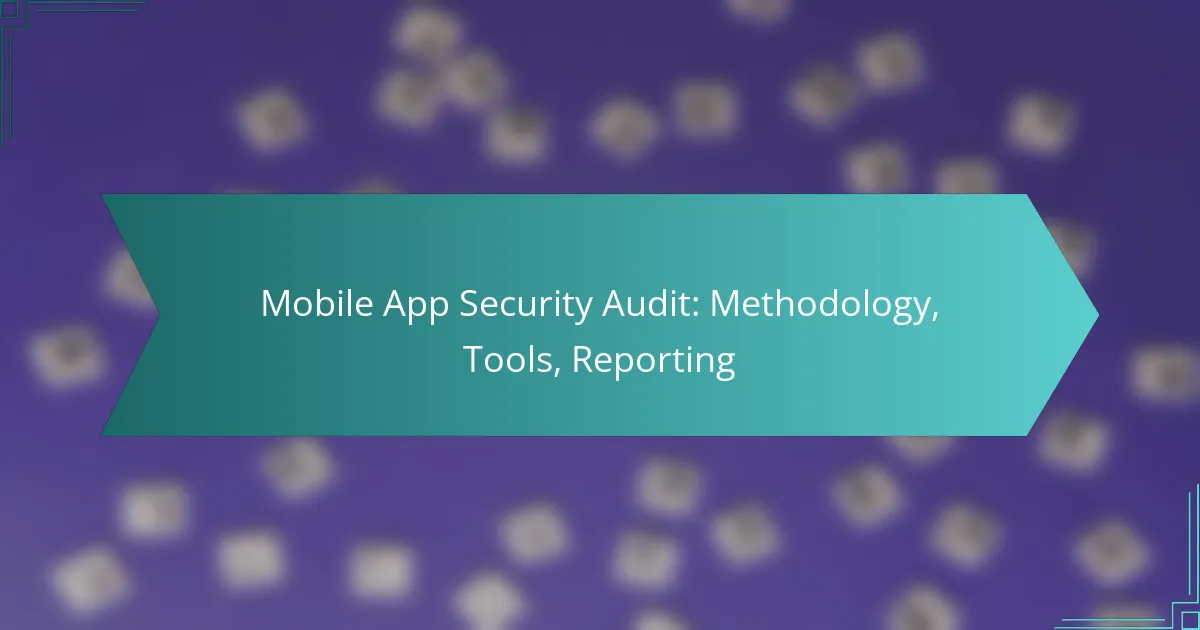Mobile app data protection is essential in safeguarding sensitive information from unauthorized access and breaches. Key strategies include employing strong encryption methods like AES and RSA, implementing stringent access control measures, and ensuring secure storage practices. By prioritizing these elements, developers can enhance the security and integrity of their applications, ultimately protecting user data effectively.

What are the best encryption methods for mobile app data protection?
The best encryption methods for mobile app data protection include AES, RSA, ChaCha20, and end-to-end encryption. Each method offers unique advantages and considerations, making them suitable for different scenarios in securing sensitive data.
AES (Advanced Encryption Standard)
AES is a symmetric encryption algorithm widely used for securing data in mobile applications. It operates on fixed block sizes of 128 bits and supports key sizes of 128, 192, or 256 bits, providing strong security against unauthorized access.
When implementing AES, ensure that you use a secure key management process. Avoid hardcoding keys in the application code, as this can expose them to attackers. Instead, consider using secure storage solutions or hardware security modules (HSMs) for key management.
RSA (Rivest-Shamir-Adleman)
RSA is an asymmetric encryption algorithm that uses a pair of keys: a public key for encryption and a private key for decryption. This method is particularly useful for securely exchanging keys or sensitive information over untrusted networks.
While RSA provides strong security, it is generally slower than symmetric algorithms like AES. For mobile apps, use RSA for key exchange and then switch to a symmetric method like AES for encrypting larger data sets to balance security and performance.
ChaCha20
ChaCha20 is a stream cipher known for its speed and security, making it an excellent choice for mobile applications. It operates efficiently on various hardware platforms, including those with limited processing power.
When using ChaCha20, consider pairing it with an authentication mechanism like Poly1305 to ensure data integrity. This combination provides both confidentiality and authenticity, which is crucial for protecting sensitive user data.
End-to-end encryption
End-to-end encryption (E2EE) ensures that data is encrypted on the sender’s device and only decrypted on the recipient’s device, preventing intermediaries from accessing the content. This method is vital for messaging apps and any service handling sensitive information.
To implement E2EE effectively, use established protocols like Signal Protocol or Double Ratchet. Regularly update your encryption libraries and stay informed about potential vulnerabilities to maintain a high level of security for your users.

How can access control enhance mobile app security?
Access control is crucial for enhancing mobile app security by regulating who can access sensitive data and functionalities. Implementing effective access control measures helps prevent unauthorized access, thereby protecting user information and maintaining app integrity.
Role-based access control (RBAC)
Role-based access control (RBAC) assigns permissions based on user roles within an organization. This method simplifies management by allowing administrators to define roles with specific access rights, ensuring that users only access data necessary for their job functions.
For example, in a mobile banking app, a customer service representative might have access to customer account details, while a regular user can only view their own account. This minimizes the risk of data breaches by limiting exposure to sensitive information.
Multi-factor authentication (MFA)
Multi-factor authentication (MFA) adds an extra layer of security by requiring users to provide two or more verification factors to gain access. This can include something they know (a password), something they have (a smartphone), or something they are (biometric data).
Implementing MFA in a mobile app can significantly reduce the likelihood of unauthorized access, as attackers would need more than just a password to compromise an account. Common methods include SMS codes, authentication apps, or fingerprint recognition.
OAuth 2.0
OAuth 2.0 is an authorization framework that allows third-party applications to access user data without sharing passwords. It enables users to grant limited access to their information, enhancing security by reducing the need for password sharing.
For instance, a mobile app can use OAuth 2.0 to allow users to log in using their Google or Facebook accounts. This method not only streamlines the login process but also minimizes the risk of password theft, as users do not need to create and manage multiple passwords for different services.
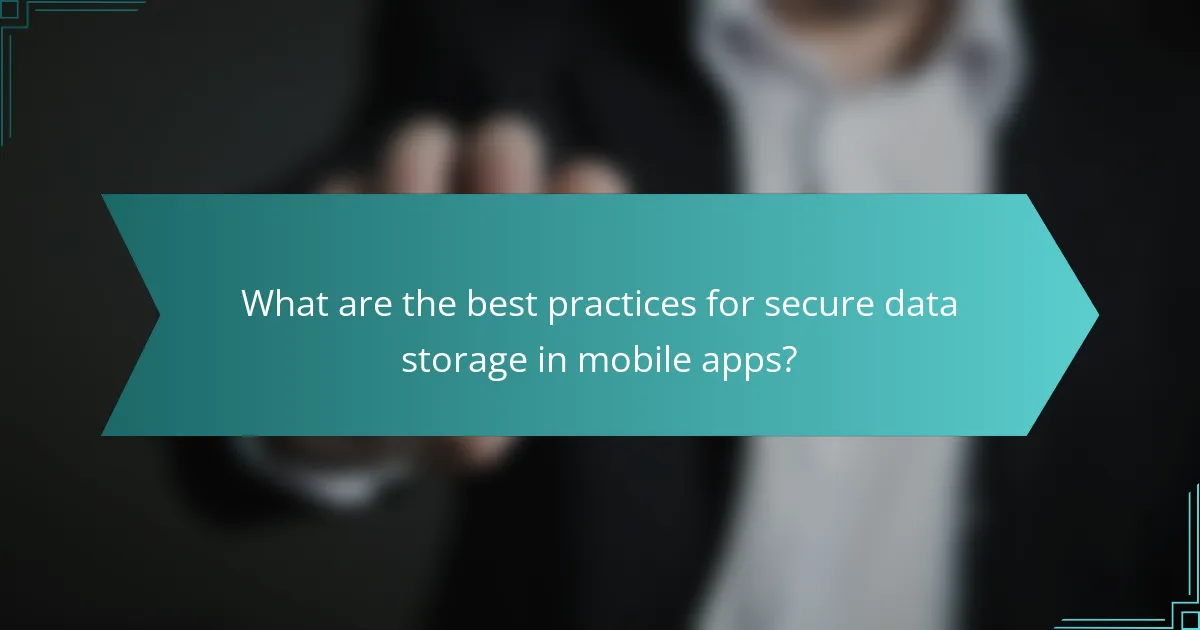
What are the best practices for secure data storage in mobile apps?
To ensure secure data storage in mobile apps, implement robust encryption, utilize secure enclaves, and conduct regular security audits. These practices help protect sensitive information from unauthorized access and potential breaches.
Use of secure enclaves
Secure enclaves are isolated environments within a device that provide an extra layer of security for sensitive data. They store cryptographic keys and perform sensitive operations without exposing data to the main operating system, reducing the risk of unauthorized access.
When developing mobile apps, leverage secure enclaves available on platforms like iOS (using the Secure Enclave Processor) and Android (with Trusted Execution Environment). This ensures that critical information, such as biometric data and encryption keys, remains protected even if the device is compromised.
Data encryption at rest
Data encryption at rest involves encoding data stored on a device to prevent unauthorized access. This practice is essential for protecting sensitive information, such as user credentials and personal data, from being easily accessed if the device is lost or stolen.
Utilize strong encryption standards, such as AES-256, to secure data at rest. Implement key management practices to ensure that encryption keys are stored securely and are not hard-coded within the app, which could expose them to attackers.
Regular security audits
Conducting regular security audits helps identify vulnerabilities in your mobile app’s data storage practices. These audits should assess both the app’s code and its data storage mechanisms to ensure compliance with security standards and best practices.
Establish a routine for security audits, ideally on a quarterly basis, and consider using third-party security firms for an unbiased assessment. This proactive approach can uncover potential weaknesses before they are exploited, helping to maintain user trust and data integrity.
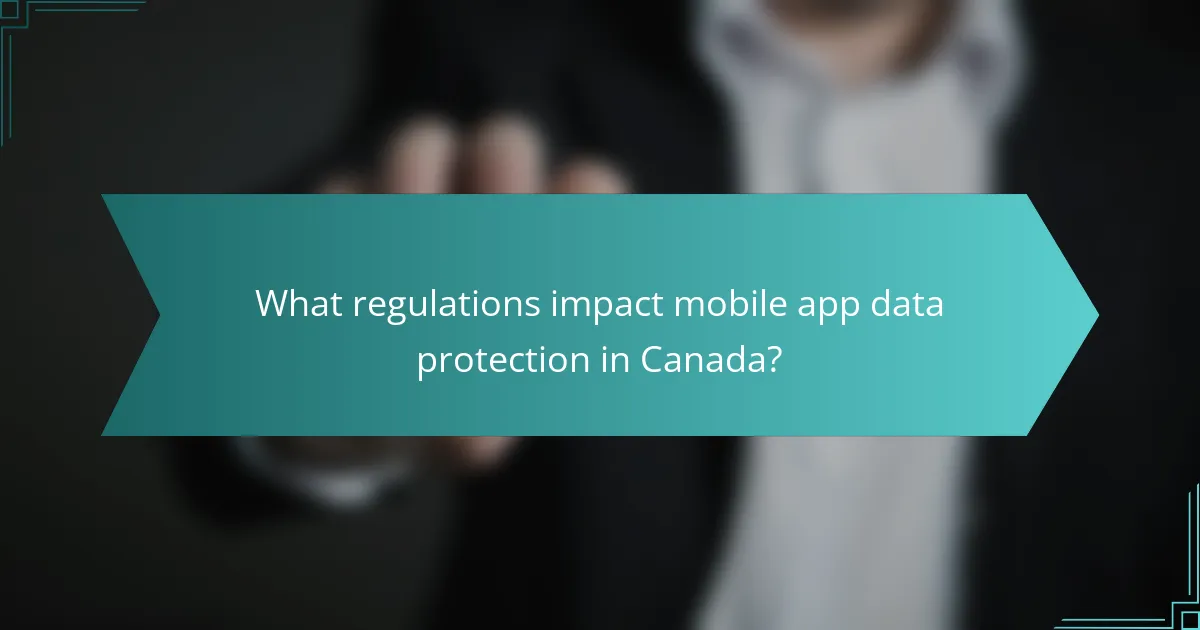
What regulations impact mobile app data protection in Canada?
In Canada, mobile app data protection is primarily governed by the Personal Information Protection and Electronic Documents Act (PIPEDA), which sets the standard for how personal data must be handled. Additionally, while the General Data Protection Regulation (GDPR) is a European regulation, it can also affect Canadian businesses that handle data of EU citizens.
Personal Information Protection and Electronic Documents Act (PIPEDA)
PIPEDA requires organizations to obtain consent when collecting, using, or disclosing personal information. This means mobile apps must clearly inform users about what data is being collected and how it will be used.
Organizations must also implement appropriate security measures to protect personal data. This includes encryption, access controls, and secure storage solutions to prevent unauthorized access and data breaches.
Failure to comply with PIPEDA can result in significant penalties, including fines and reputational damage. Regular audits and user feedback can help ensure compliance and improve data protection practices.
General Data Protection Regulation (GDPR)
The GDPR applies to any organization that processes the personal data of EU citizens, regardless of where the organization is located. This means Canadian mobile apps that target or collect data from EU users must adhere to GDPR requirements.
Key principles of GDPR include data minimization, purpose limitation, and the right to access and delete personal data. Mobile apps must ensure that they only collect necessary information and provide users with clear options to manage their data.
Non-compliance with GDPR can lead to hefty fines, up to 4% of annual global turnover or €20 million, whichever is higher. Therefore, Canadian developers should implement robust data protection measures and consider consulting with legal experts to navigate these regulations effectively.
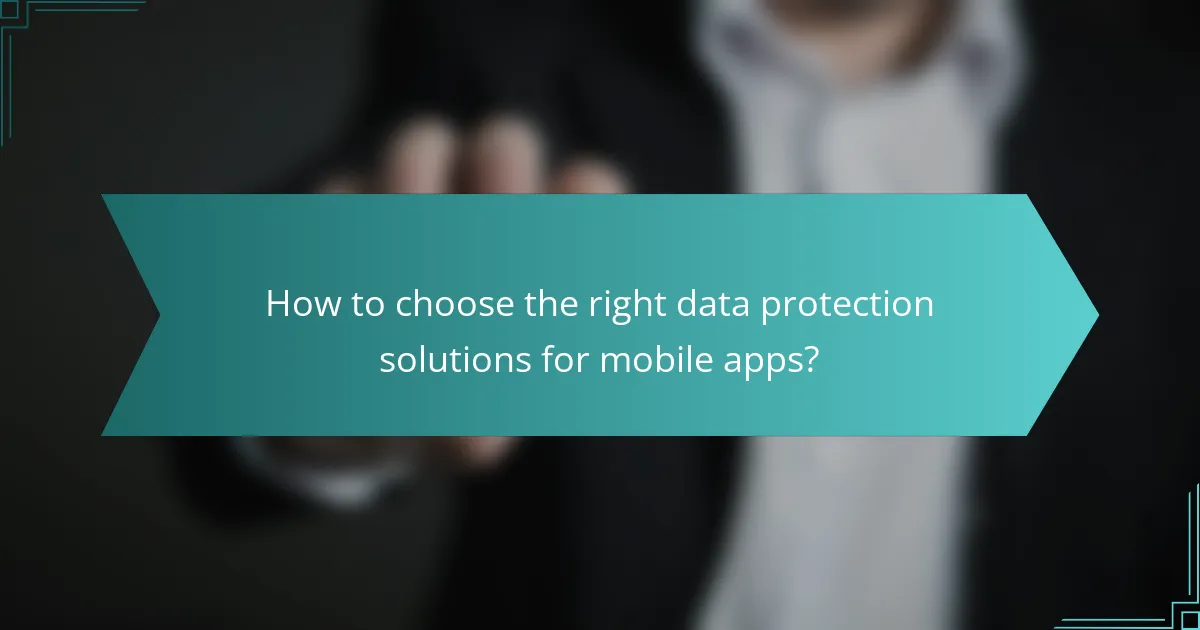
How to choose the right data protection solutions for mobile apps?
Selecting the right data protection solutions for mobile apps involves understanding user needs, compliance requirements, and the specific security features necessary for safeguarding sensitive information. Prioritize encryption, access control, and secure storage to ensure robust protection against data breaches.
Assessing user needs
Begin by identifying the types of data your app will handle, such as personal information, payment details, or health records. Understanding user expectations regarding privacy and security will guide your choice of protection measures.
Consider conducting user surveys or focus groups to gather insights on their concerns and preferences. This feedback can help you prioritize features like biometric authentication or end-to-end encryption, ensuring that your app meets user demands effectively.
Evaluating compliance requirements
Compliance with data protection regulations is crucial for mobile apps, especially if they handle sensitive information. Familiarize yourself with relevant laws such as the General Data Protection Regulation (GDPR) in Europe or the California Consumer Privacy Act (CCPA) in the United States.
Ensure that your data protection solutions align with these regulations by implementing features like data minimization, user consent mechanisms, and transparent privacy policies. Regular audits and updates will help maintain compliance as regulations evolve.








